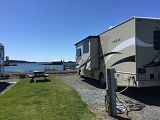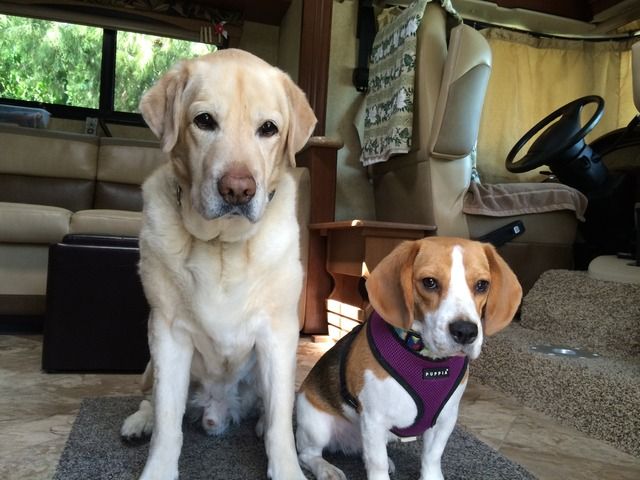Here we go again.
Since I didn't include a photo of the passenger side, I am including it here for future reference - this before I started the job (notice the fancy black - and totally useless - factory-installed door coverings, which had to be removed):

Once I had the insulation in the walls and ceiling, it was time to put in the feathering stips (these particular 8-footers are for the ceiling) to which I would later attach wooden paneling.

This kind of took forever, and was heart-stoppingly tense. The forever part was measure, measure and measure again and hope for the best. The heart-stoppers were the fact that I had to take my drill with the special metal-piercing drill bits and drill into the metal ribs of the van, hoping I didn't also puncture through the skin of the van, always a bit of a risk because I had to lean on the drill with all my strengh to get it to drill into the metal rib in the first place.
Also needed to drill the wood (to put in the self-tapping screws). The really hard part was measuring so that the holes in the wood precisely matched the holes in the metal.
Since I was always working alone (which is why I'm not in any of the pictures - I was/am the photographer too), there wasn't anyone to hold things up for me, and I'm not physically strong enough to hold the heavy drill and the wood against the ceiling, and then drill through both the wood and the metal at the same time. Couldn't do it, so it was measure, measure, measure and drill the board. If the holes didn't match then that particular board was toast. With no jam.
Once the drilling was done, and the holes matched, there was still the small problem of holding an awkward eight-foot length of wood up tight enough against the ceiling long enough to get the screws in. By myself.
This is now I solved that problem:

and

And another one:

Notice the wiring on the driver's side in the above photo. The wiring needed to have a feathering strip above and below the wiring in order to isolate it. Accidentally drilling through vehicle wiring is a BIG no-no. I may be many things, but an electrician I am most surely not.
Why the phone book, you might ask? Well, hey, ya never know when a gal's gotta make a call, eh? Just sayin. . .
Unfortunately, some of my bracing boards were about an inch too short to brace the ceiling feather. The phone book gave it the extra needed height. The extra "oomph" so to speak. Just don't tell Ma Bell.
Here are (some) of the ceiling feathering strips installed. There are a total of six. Two in the ceiling, and two driver side, two passenger side. It took me about seven (7) hours to put in *each* individual one of these feathering strips: measure-measure-measure, drill metal, drill wood, match holes, brace strips (where did I put that #@@!! phone book, anyway???), screw in self-tapping metal screws every six inches. Whew.
You will also notice that now all of the nasty duct tape is gone, and has been replaced with semi-clear Tyvek tape. Don't you think it looks a lot better? Works a lot better too.

Feathering strips looking out the back door (count 'em: seven on view. Total of about ten - the lower one's do not show in the photo, and an upper to the left of the photo was not yet installed. Ignore the messy garage. What's a girl gonna do? Work on her van or clean the garage? You got it!!

A few days went by, and I was pretty proud of myself. I had about decided NOT to put insulation on the wheel wells - too hard, and who needs to insulate stinkin' wheel wells anyway?!? Until one hot day I came home from work and put my head in the van. It was hotter in there than I thought it should be, what with all the insulation I had done. The insulated walls were cool to the touch. What the hey. . .?
Then I put my hand on the inside wheel well, and nearly got burned. It was literally too hot to touch. Back to the wheel-well insulation drawing board. Dang!
This was really a toughie. As mentioned before, I am no great shakes with the measuring tape, and since the wheel well is curved, it did not lend itself well to tracing a template, although I tried several times with dismal results. What to do? This:

The 1/2 inch styrofoam had a *tiny* bit of bend to it (although not much - the thicker stuff would just break). So what I did was layer it on, securing it with Tyvek tape (and later a kind of wooden tie-down). After the layering, I put on a 1" front piece, and taped it securely to the layering.
This photo shows the factory-installed fancy black door coverings removed, to be replaced with. . . very good, you guessed it! More insulation. . .

Ok, so now (several months in) I *finally* have all of the insulation in the walls. Or so I think. . .
But then when I installed the feathering strips (which were 3/4" wide) the walls are no longer smooth. I know that I am going to install majorly flimsy wooden paneling - and if this paneling does not have support behind it, it would probably be pretty easy to put a finger through it. So. . . hey! You guessed it! MORE insulation.
This photo shows 3/4" panels of insulation put in between the feathering strips, and finished off with Tyvek tape (you can also see the wheel well hold-down mentioned above, and a tiny patch of van metal behind the wheel well - this is where I will eventually bolt the beds to the van frame):

To be uniform, this had to be done in both walls (driver and passenger side) and in the ceiling.
Took another month or two.
At least.
[sigh]
To Be Continued. . .















